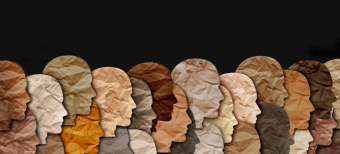Strengthen your intercultural skills

Working in a multicultural environment is a stimulating, but tough experience. The problem is not as much understanding cultural differences as adapting to them. How can one become a real “cultural chameleon"?
Hardly anyone today works in a mono-cultural environment. Migratory trends are such that even purely domestic firms generally have employees of different nationalities and origins, and almost everyone uses foreign suppliers or service providers. Business exploration does not stop at national borders. In large corporations, multiculturalism is the norm. Indeed, this observation triggered the following statement from the legendary CEO of General Electric, “The Jack Welch of the future cannot be like me. I spent my entire career in the United States. The next head of General Electric will be someone who spent time in Bombay, in Hong-Kong, in Buenos Aires, etc.”
Multiculturalism may be a stimulating and enriching source of opportunities, but is also undeniably demanding. The head of a business unit of a large industrial group put it this way: “For some years now, we’ve been like the tower of Babel. Language is not really a problem; everyone speaks "Globish" (global English). But that doesn’t mean we understand each other! I really like this ambiance, but I must say that it isn’t easy every day.”
Indeed, although most of us are now accustomed to mixing cultures, we still have trouble finding the right balance between adapting to our perceived understanding of the operating practices of another culture and acting according to our own reflexes. Our comfort zones are shrinking, as we are increasingly confronted with wide cultural gaps that force us to spend energy continuously adapting and adjusting our behavior. As exciting as these environments may be, we must not forget that they are also a source of stress and frustration. Moreover, despite our efforts to remain open-minded, understand others and build skills in cross-cultural communication, correctly interpreting the reactions of people of different cultural origins remains a challenge. Misunderstandings abound and missteps are inevitable.
How can we facilitate this adaptation, while minimizing the risk of blunders? In particular, how can we go beyond merely understanding cultural differences to develop true cross-cultural agility?
In this synopsis:
- Get to the root of cultural differences
- Develop your cross-cultural agility
- Overcoming prejudice in a diverse team
SubscriberSign in
to download
the synopse (8 p.)
VisitorI want to buy
this synopsis (8 p.)
VisitorI want
to subscribe
See also

Dare talk about prejudices
To manage diversity effectively, it is necessary to dispel the taboo that often surrounds prejudices. How can we identify them and counter their harmful effects?





